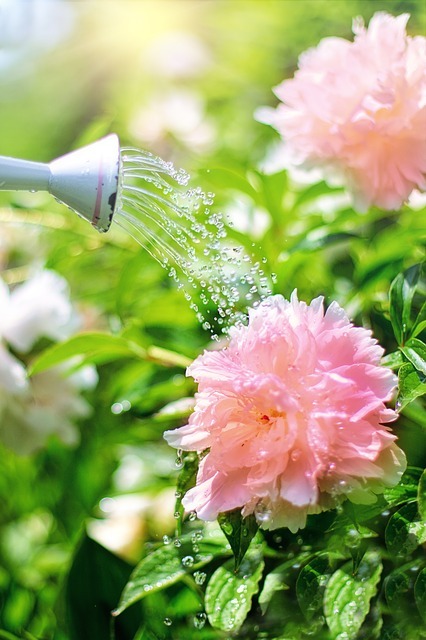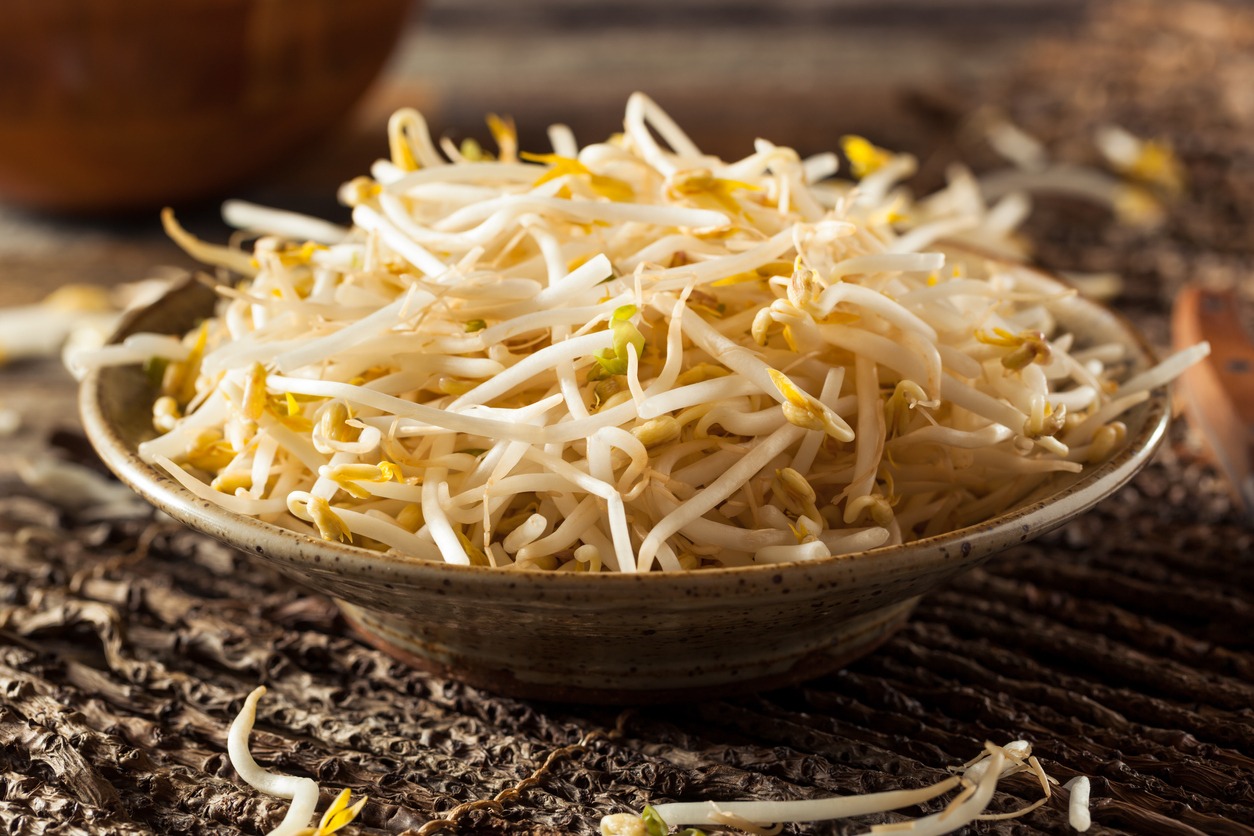Garden Chores for Kids: Tasks for Every Age to Help Out
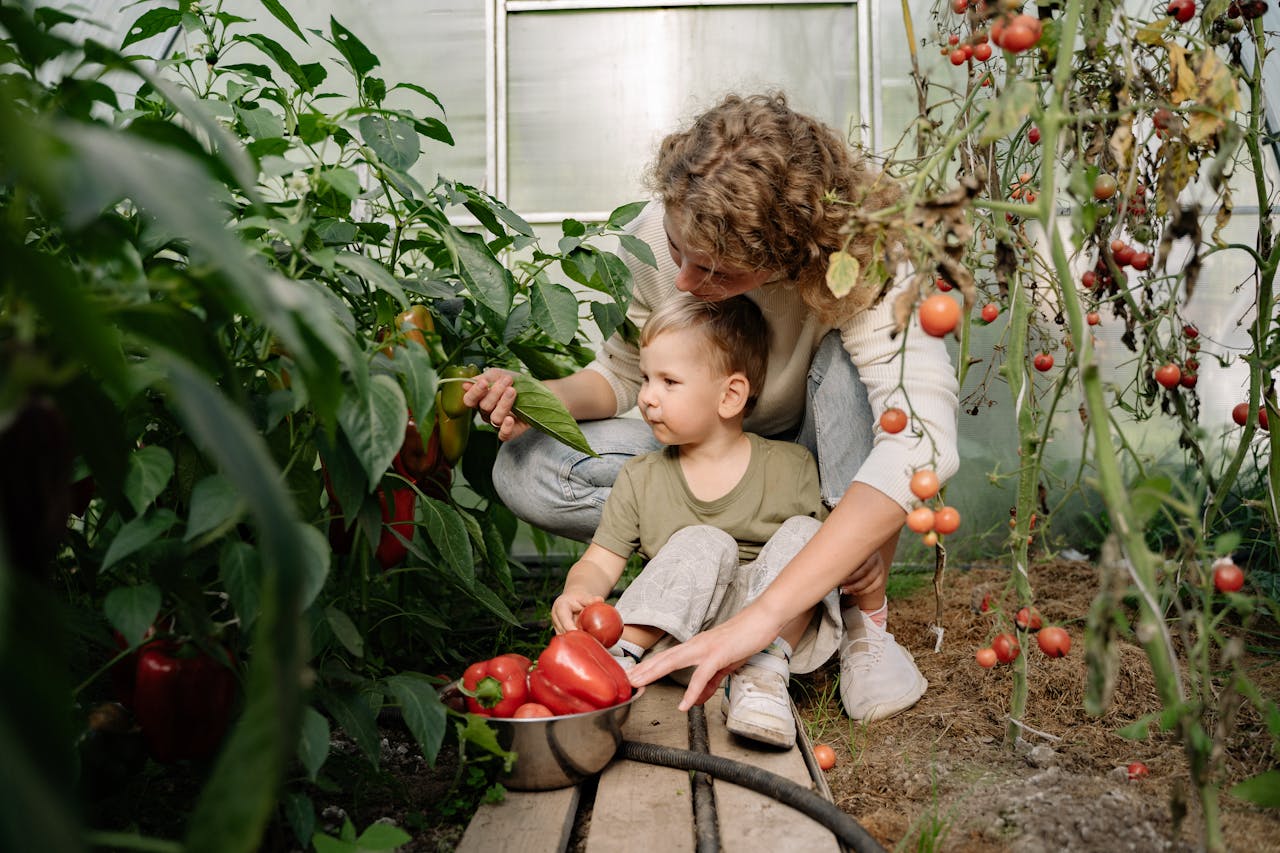
Gardening is more than just an outdoor chore; it’s an opportunity to teach children life lessons, build their confidence, and create lasting memories as a family. Whether toddlers are watering plants or teenagers are designing entire garden layouts, every age group can enjoy and learn from this rewarding activity. In this guide, we’ll explore how to involve kids of all ages in gardening, provide practical tips, and show how to make the experience fun, safe, and educational for everyone.
The Benefits of Gardening for Kids
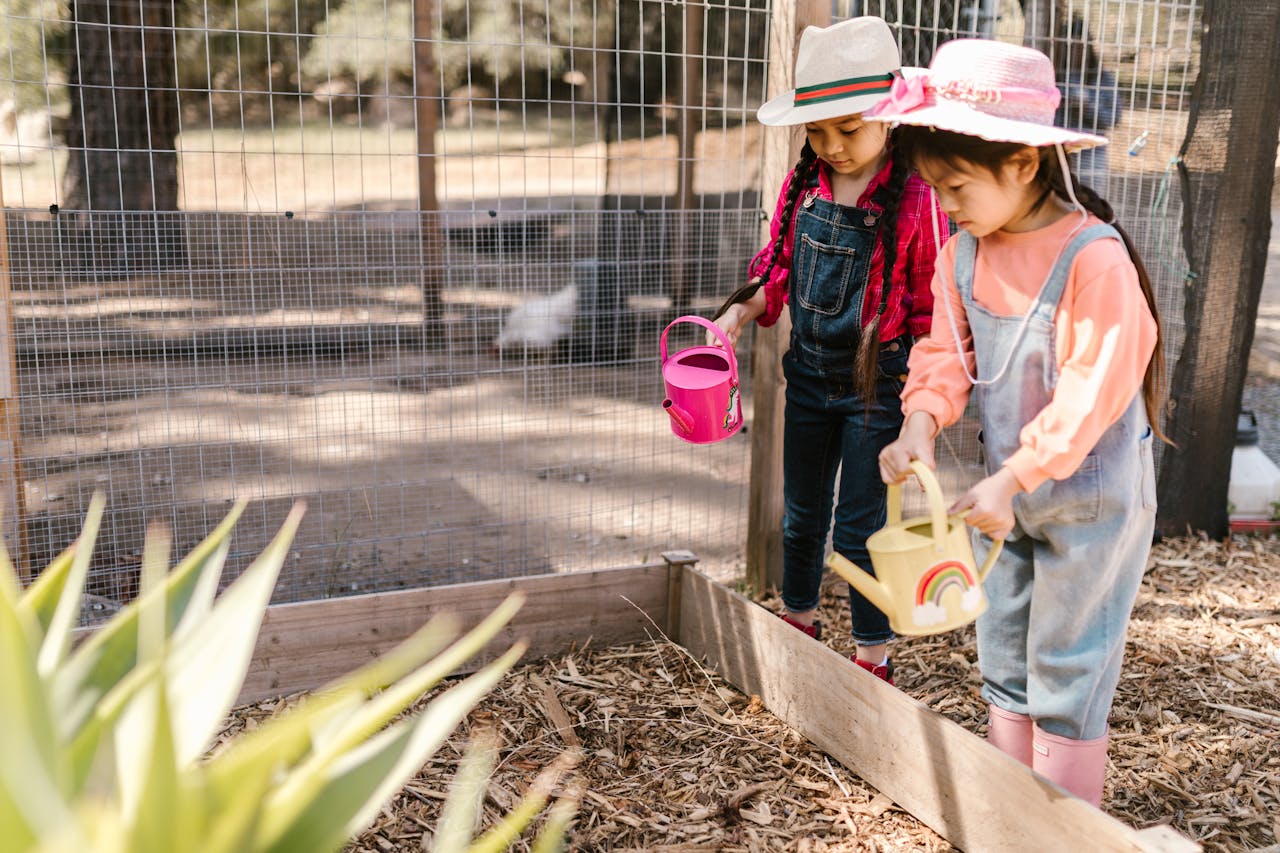
Gardening offers numerous benefits that can positively impact children’s development and their relationship with nature:
- Skill Development: Handling small seeds or digging soil helps young kids improve their fine motor skills. Monitoring plant growth teaches observation while solving common gardening problems (like pests or wilting plants) and encourages critical thinking and creativity.
- Life Lessons: By assigning consistent gardening tasks, kids learn responsibility. Watching plants grow from seeds to blooms or crops reinforces the value of patience, while teamwork strengthens their communication and collaboration skills.
- Connection to Nature: In a world where screen time dominates, gardening offers kids a chance to step outside, breathe fresh air, and connect with the natural world. This fosters environmental awareness and a deeper appreciation for the earth.
Getting Started: Preparing Kids for Gardening
Before diving into gardening tasks, take a few steps to prepare your kids and set the stage for success:
- Introduce Gardening Concepts: Start with books, videos, or even a trip to a local garden. Show them how plants grow and explain the basics of soil, sunlight, and water. The more they understand, the more engaged they’ll be.
- Make It Personal: Let your child choose a plant they love, like bright flowers, strawberries, or carrots. Their excitement will grow as they watch their chosen plant thrive.
- Create Budget-Friendly Options: Gardening doesn’t need to cost much. Use recycled materials like egg cartons to start seedlings or old jars as makeshift planters. These creative solutions teach kids resourcefulness while keeping costs low.
By taking these steps, you’ll build excitement and confidence, making the gardening experience enjoyable right from the start.
Age-Appropriate Gardening Tasks
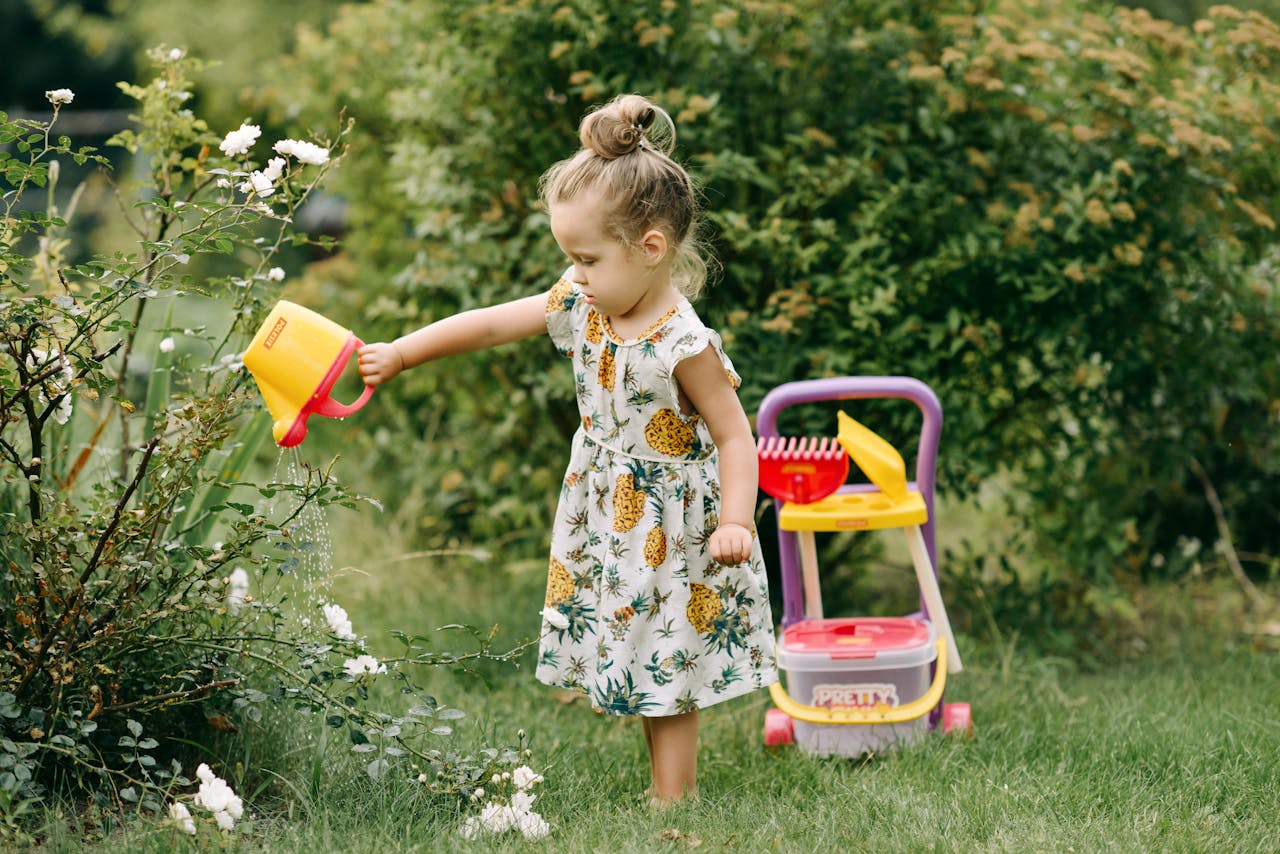
Toddlers (Ages 2-4)
Toddlers are naturally curious and love to explore, making the garden an ideal environment for sensory-rich learning experiences. Here’s how you can involve them:
- Watering Plants: Give them a small, lightweight watering can and show them how to gently water plants. This activity strengthens their coordination and helps them understand the importance of water for growth.
- Collecting Leaves and Petals: Turn tidying up into a game by asking toddlers to gather colorful leaves or petals. This simple task keeps the garden tidy and engages their sense of wonder.
- Digging and Planting Seeds: Let them dig small holes with their hands or a child-safe trowel and plant seeds. Start with fast-growing seeds like sunflowers or beans to keep them interested.
- Observing Nature: Spend time pointing out insects, worms, or birds. Encourage them to ask questions and share what they notice. This sparks their curiosity and builds a connection to the ecosystem.
Remember to keep tasks short and incorporate lots of praise to match their attention span and energy levels.
Young Children (Ages 5-8)
As kids grow, they can handle more complex tasks that build their independence and problem-solving skills:
- Planting Bulbs and Seeds: Teach them how to measure the depth for planting bulbs or seeds. They’ll enjoy watching their hard work bloom into colorful flowers or tasty vegetables.
- Raking Leaves and Spreading Mulch: Tasks like raking and mulching are perfect for building strength and coordination while helping maintain the garden’s appearance.
- Harvesting Produce: Show them how to identify ripe fruits or vegetables and encourage them to pick them carefully. This helps them understand where food comes from and adds a sense of accomplishment.
- Monitoring Plant Growth: Provide them with a notebook to sketch plants or jot down observations like leaf size or flower color. This activity develops their attention to detail and introduces them to scientific observation.
Here’s a fun idea: create a scavenger hunt where they search for specific flowers, bugs, or colors in the garden. This transforms chores into an engaging adventure.
Pre-Teens (Ages 9-12)
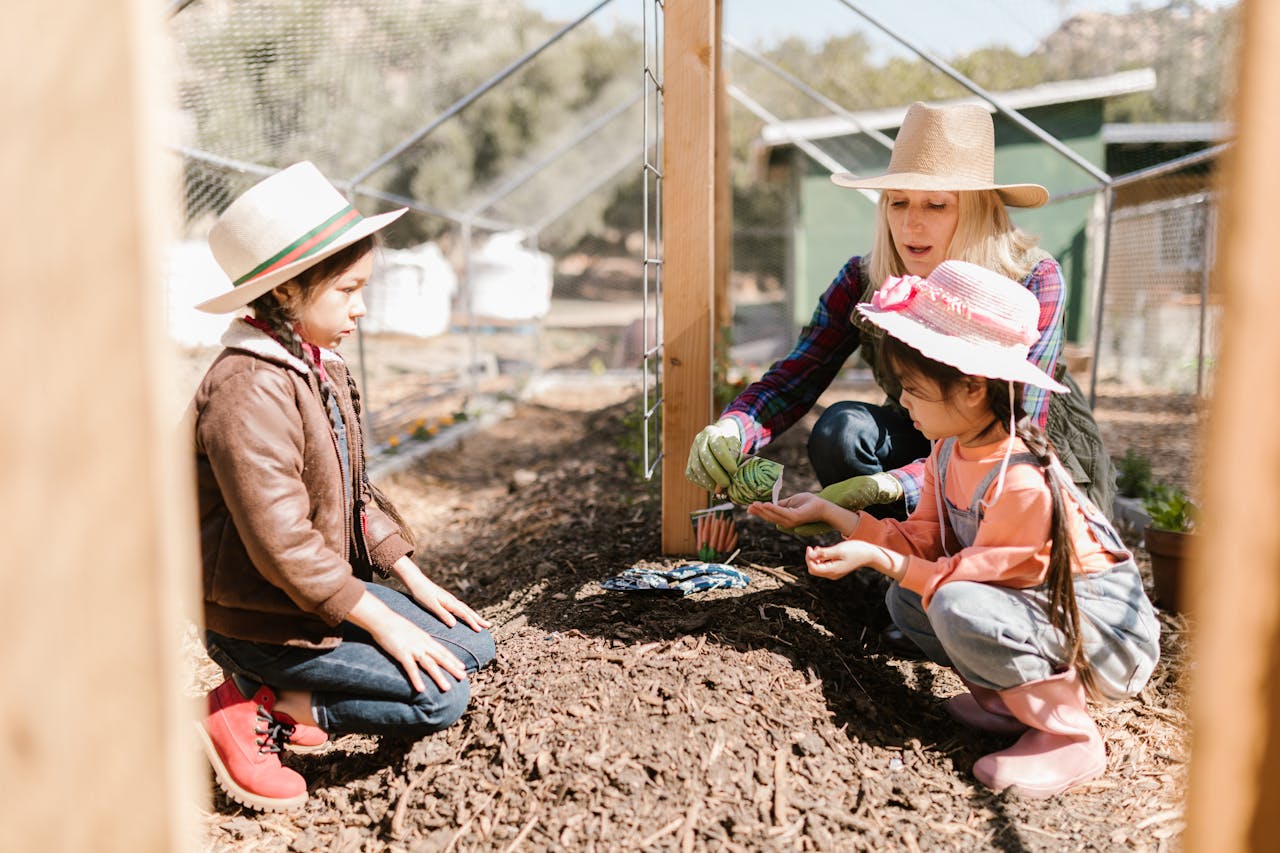
Pre-teens have the independence and capability to take on more responsibility, making this an ideal age for hands-on learning and leadership:
- Designing Garden Layouts: Allow them to plan small sections of the garden. Let them decide where to place plants, pathways, or decorative features. This fosters creativity and spatial awareness.
- Mowing and Weeding: Teach them to use a push mower safely and assign them small weeding zones. These tasks build perseverance and an understanding of plant care.
- Garden Journaling: Encourage them to keep a journal where they track planting dates, weather patterns, and plant growth. This not only teaches organization but also helps them see their efforts pay off over time.
- Composting and Pest Control: Introduce them to eco-friendly practices like composting kitchen scraps or using natural solutions for pest management. These activities teach sustainability and problem-solving.
Assign specific garden sections or plants to your pre-teen, making them responsible for their care and progress. This builds a sense of ownership and accountability.
Teenagers (Ages 13-18)
Teenagers have the strength, maturity, and creativity to handle more advanced projects and even take on leadership roles in the garden:
- Garden Management: Encourage teens to plan seasonal tasks, create planting schedules, and oversee soil preparation. This helps them develop project management skills.
- Building Projects: Involve them in constructing garden trellises, raised beds, or compost bins. These tasks provide hands-on experience in teamwork and engineering.
- Preserving Produce: Teach them to can, freeze, or dry harvested fruits and vegetables. This adds a valuable life skill to their repertoire and extends the garden’s benefits into the kitchen.
- Mentoring Younger Kids: Encourage teens to guide their younger siblings or neighborhood kids in gardening basics. Teaching others reinforces their knowledge and builds their confidence.
Recognize their contributions by letting them take the lead on family gardening projects or introduce new ideas to the garden.
Seasonal Gardening Tasks for Kids
Each season presents unique opportunities for kids to participate and learn in the garden. Here are some tasks you can give your kids according to the season:
- Spring: Plant seeds, transplant seedlings, and spread mulch to prepare for the growing season.
- Summer: Water plants, harvest fruits and vegetables, and deadhead flowers to encourage blooming.
- Fall: Rake leaves, plant bulbs for spring flowers, and prepare garden beds for winter.
- Winter: Clean and store tools, plan next year’s garden, and make bird feeders to attract wildlife.
Create a family garden calendar to assign and track seasonal tasks. This helps everyone stay organized while encouraging teamwork.
Gardening on a Budget

Gardening doesn’t have to be expensive. Here are some creative ways to save money while making the activity fun and engaging:
- Use household items like spoons, old jars, or tin cans as gardening tools or planters. This teaches kids the value of upcycling and resourcefulness.
- Participate in local seed swaps or ask friends and neighbors for plant cuttings.
- kids in painting old pots or creating plant markers from sticks and pebbles. These projects add personality to your garden without breaking the bank.
Teaching Eco-Friendly Gardening Practices
Gardening offers a perfect opportunity to teach sustainability. Here are some eco-friendly gardening practices that can
- Composting: Show kids how to compost kitchen scraps and garden waste. Explain how compost enriches the soil, emphasizing the importance of reducing waste.
- Water Conservation: Use rain barrels or encourage kids to water plants early in the morning to minimize evaporation.
- Natural Pest Control: Teach them to use natural solutions, like introducing beneficial insects or creating homemade sprays with soap and water.
By focusing on eco-friendly practices, you’re teaching kids how to care for the environment while caring for their garden.
Ensuring Safety in the Garden
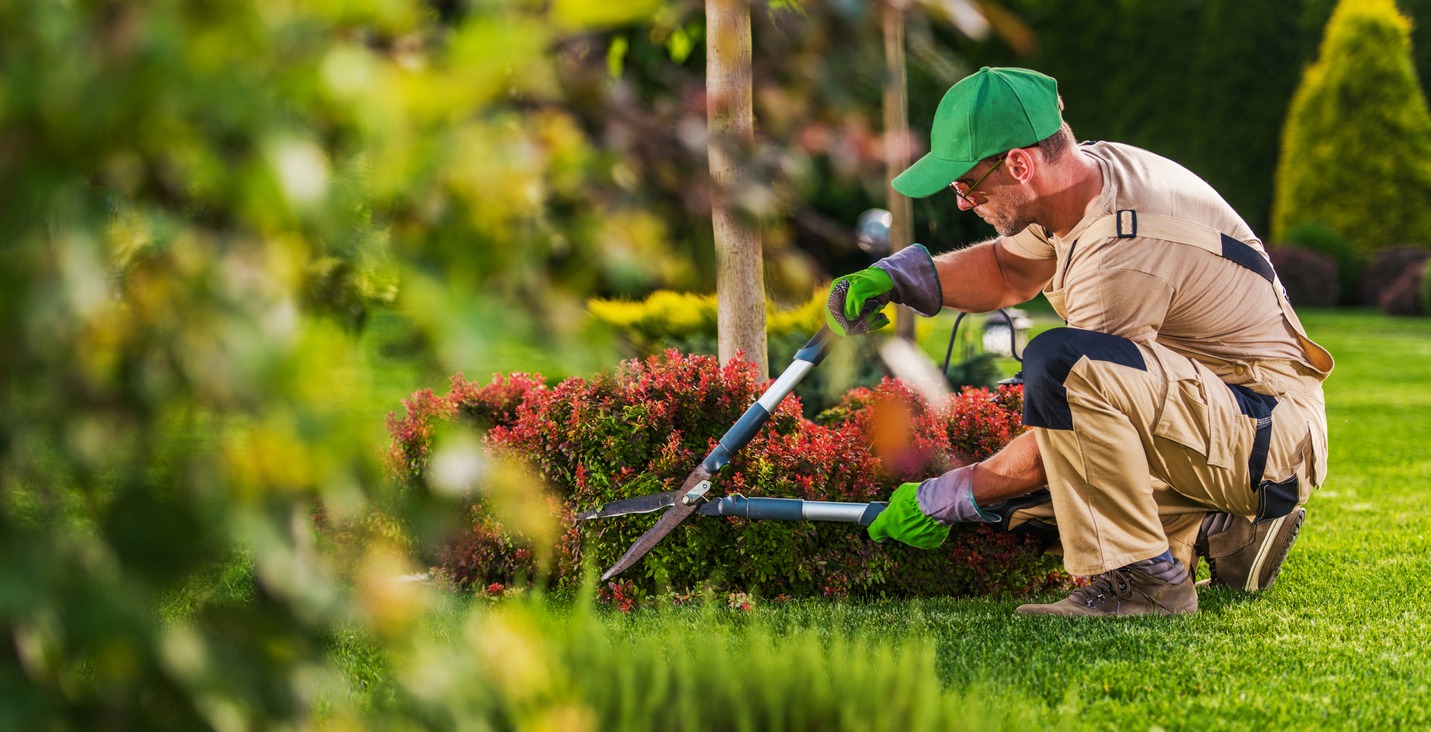
Safety should always be a top priority when involving kids in gardening:
- Protective Gear: Equip kids with gloves, hats, and sunscreen, and provide child-friendly tools to prevent injuries.
- Clear Rules: Teach kids to handle tools responsibly, avoid running near sharp objects, and wash their hands after gardening.
- Emergency Readiness: Make sure kids know how to handle accidents, such as a bee sting or scraped knee. Keep a first aid kit handy.
Parent Tip: Regularly inspect the garden for hazards, such as sharp tools or toxic plants, to ensure a safe environment.
Making Garden Chores Fun and Engaging
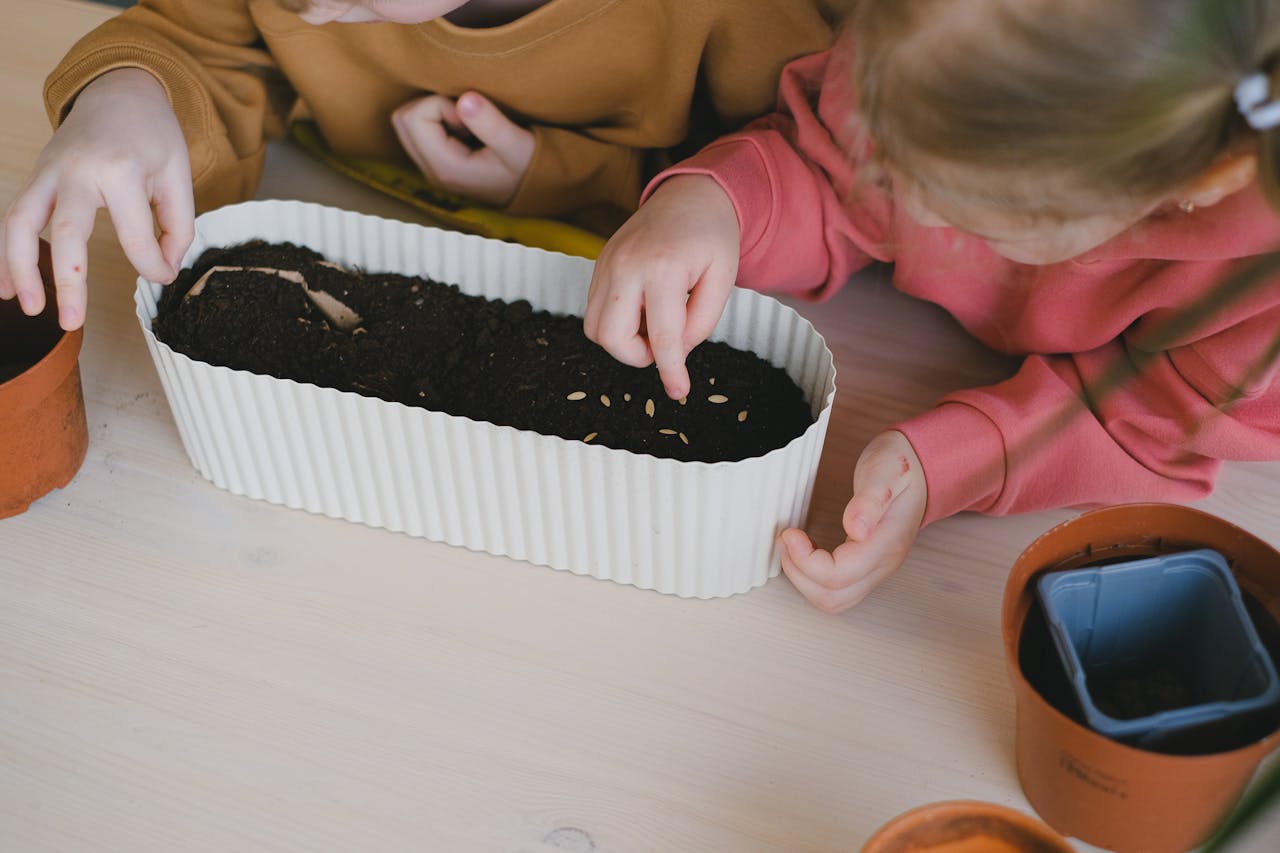
Transforming garden chores into games can make the experience more enjoyable:
- Scavenger Hunts: Challenge kids to find specific plants, insects, or colors in the garden.
- Creative Projects: Build fairy gardens, paint rocks for plant markers, or create wind chimes from recycled materials.
- Reward Systems: Use stickers, small treats, or extra playtime to recognize their hard work and accomplishments.
These small efforts go a long way in keeping kids motivated and excited about gardening.
Recognizing and Rewarding Contributions
Acknowledging your children’s efforts fosters pride and encourages continued involvement:
- Celebrate Milestones: Mark special achievements, like the first harvest or the tallest sunflower, with a small celebration.
- Visual Displays: Create a family garden chart to track progress or display kids’ garden artwork.
- Increased Responsibility: Allow older kids to take on larger projects or choose new plants for the garden as a reward for their dedication.
These gestures help children feel valued and inspire them to keep growing their skills and confidence.
Final Thoughts
Gardening with kids isn’t just about maintaining a yard; it’s about growing together as a family, learning life skills, and nurturing a love for nature. By assigning age-appropriate tasks, making activities engaging, and emphasizing safety, you’ll create a fulfilling and memorable experience for everyone involved.


